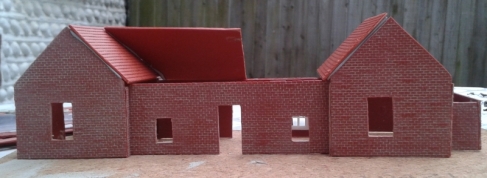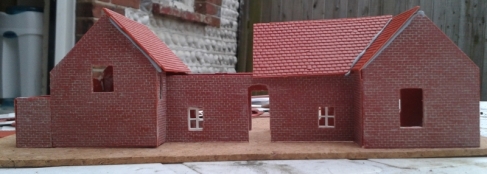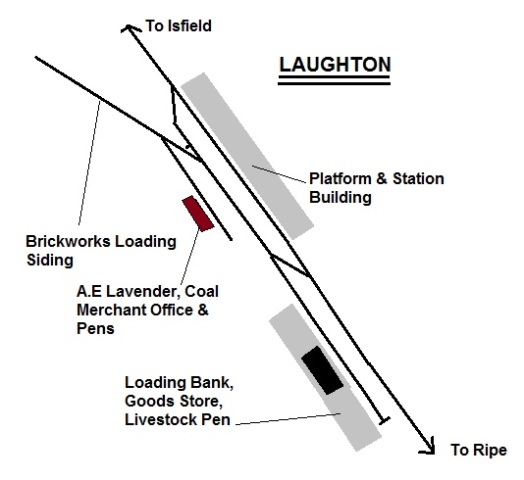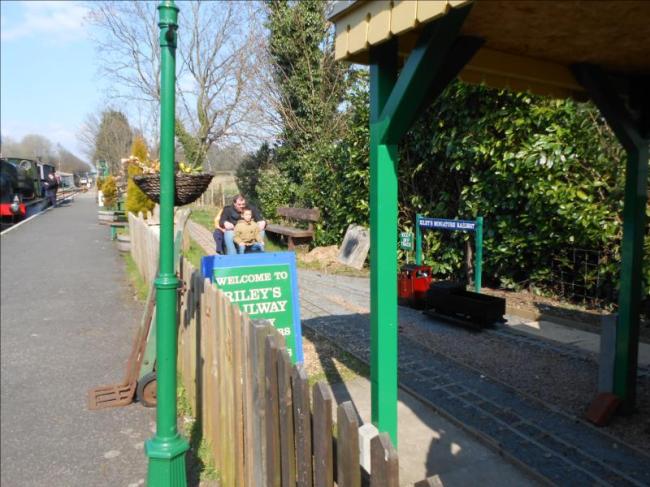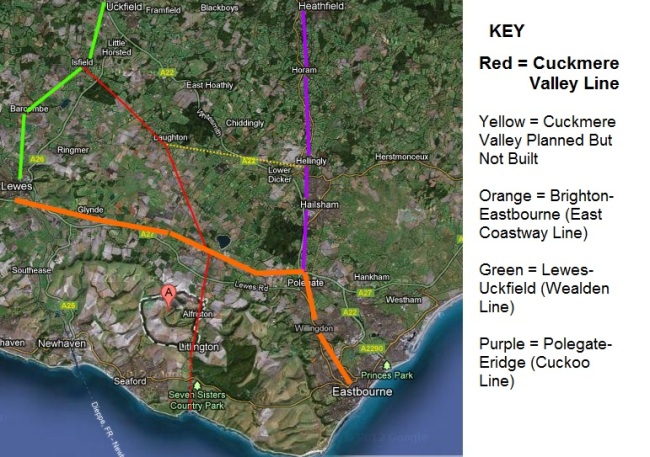The Baseboards have been on the back burner since the last update, because the weather has not tended to be at the best when I have had the time (and it isn’t late enough to annoy the neighbours) . It’s not a problem – I’m in no mood to rush things for the sake of it, and anyway, I have been reconsidering my reasons for going with the jigsaw method.
Originally, I wanted to do this because I felt it would be an easy way of making the layout portable – which still applies. However, three 4′ long boards of variable width take up the same space as one 4′ long board of a fixed width. Obviously. Am I just making trouble for myself? Was I told this when I originally mooted the idea? Yes (to the latter, the former is something I’ve been pondering).
To avoid falling into the spiral of ‘problem, wonder how to resolve it, get bored and do something else’, I’ve instead been concentrating on some of the other aspects of the layout.
Firstly rolling stock – Kevin Walsh of the Uckfield Club kindly offered me four Ratio Van kits, which he had started to convert into Poultry Vans. These used to be used on the Cuckoo Line, with Heathfield in particular being a centre for Chicken Fattening. To quote from www.heathfield.net;
In the Victorian age occupations increased in variety and in addition to farming, timber and building work, there was now a widespread industry in chicken-fattening. Trains would bring in chickens for fattening from all over and take them away when they were ready. Lots of people did a bit of fattening in their back gardens, putting up lews (shelters made from faggots) to keep out the wind. Chickens would be put on a cramming machine to fatten them up with a mixture of sour milk, ground oats and rendered down fat. Men would do the plucking and the women did the stubbing (pinching out the beginnings of new feathers). As this activity expanded, it spawned a range of related activities such as corn and seed merchants, carriers and suppliers of equipment and machinery, as well as the increase in the production of cereals and hops. This industry started in the 1860s and finished around 1960 when broilers were introduced.
‘PC’ it ain’t, but a useful rural industry for the layout it is, especially as I’m told it is unlikely that a small rural brewery would send goods out by train, instead focusing on a tightly defined local area – so whilst the brewery will still receive coal and anthracite for the brewing process, I needed another ‘export’ industry, and have now found one. LBSCR/SR Insulated Van suppliers, anyone?. I’ve so far built two of the Ratio vans that Kev supplied, and am in the (slow, it’s been years since I last used transfers) process of lettering them. I have another two more to do, couplings to install, and then they will be ready for the photo plank.
I also mentioned earlier that I have started work on the Station Building. This is based on and inspired by Hailsham station on the Cuckoo Line, but is not an exact copy as it has been flipped (the toilet block moved from one side to the other) to better fit in with the plan. Loads still to do, but a couple of photos are below;
Platform Side
Road Side
This is made from Wills parts and the roof (and windows, for that matter) are just held in place temporarily with Blu Tac – but it is getting there, with nearly all of the major constituent parts cut (apart from the roof).
How does it look compared with the original? – well, not too bad if you ignore the (thankfully part built!) roof.
Nick Catford has supplied a photo from 1965 to the excellent ‘Disused Stations‘ site which shows the front elevation well – http://www.disused-stations.org.uk/h/hailsham/index7.shtml (And also shows that I have the angle of the roof all wrong. I wondered why it was a pain in the arse to fit… – that’ll be a trip out for some more Wills roof tiles then!)
This is the first time I’ve scratchbuilt to a plan (The A.C Elliott book ‘The Cuckoo Line’ published by Wild Swan has the relevant scale drawings, which I’ve enlarged from 2mm to 4mm on a photocopier), and I have found it a most enjoyable process. Hopefully this will continue!

